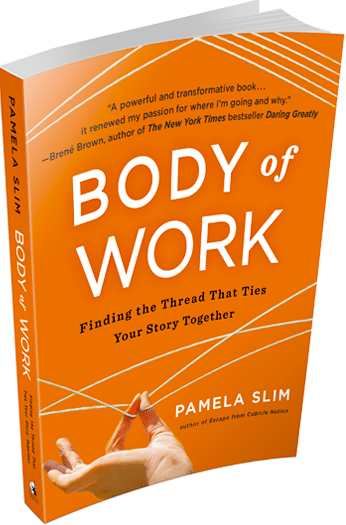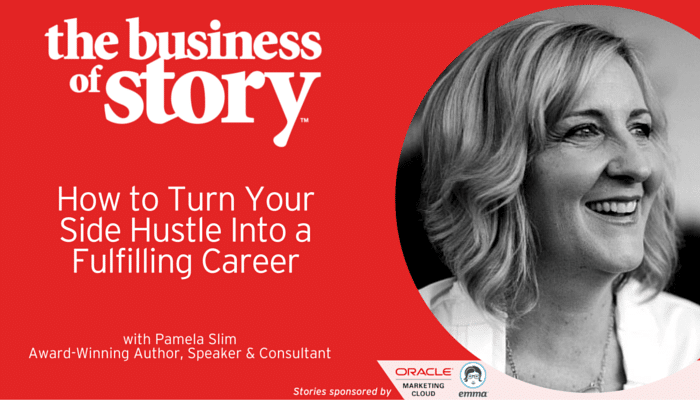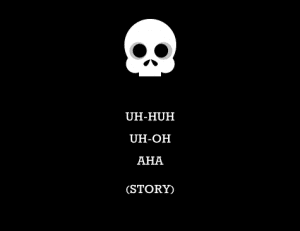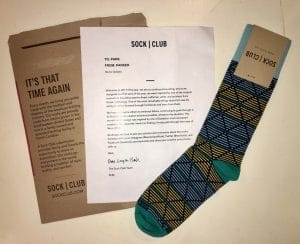I just finished Pamela Slim’s terrific book, Body of Work: Finding the Thread That Ties Your Story Together.
You probably remember Pam from her first blockbuster, Escape From Cubicle Nation: From Corporate Prisoner to Thriving Entrepreneur. I had the chance meeting with Pam when she was picking up a friend, Michael Margolis, from our office. We had lunch a week later and she gifted me with her book.
I finally got to read Body of Work when I was traveling back from Ft. Launderdale following a Business of Story keynote for the Southern Florida Interactive Marketing Association. Ironically, I was at 36,000 feet when cracked it open; a fitting metaphor given that Body of Work provides a success framework from 36,000 feet on how to create and curate your most meaningful work.
“Your body of work is everything you create, contribute, affect, and impact. For individuals, it is the personal legacy you leave at the end of your life, including all the tangible and intangible things you have created. Individuals who structure their career around autonomy, mastery and purpose will have a powerful body of work.” – Pamela Slim
The Body of Work Success Framework
Pam shares the Body of Work Success Framework on how to make it happen:
- Define Your Roots
Describe where you come from and what motivates you - Name Your Ingredients
Define your unique talents and skills - Choose Your Work Mode
Decide how you are going to approach creating your body of work - Create and Innovate
Make it a project and go for it - Surf the Fear
Lean into your internal antagonists - Collaborate
Surround yourself with talented people who care about your success - Your Definition of Success
Get clear on what success looks and feels like to you - Share Your Story
Let your world know what you’re up to
What I found fascinating in this terrific book is how the Body of Work Success Framework is built on the chassis of story. This is interesting to me because story structure pervades our lives. We live, breathe and consume stories to make sense out of the world, and Pam uses it to help guide us on our most important pursuits.
Listen to my special 4th of July interview with Pam Slim on finding the freedom in the work we do.
Story becomes even more powerful in our lives when we intentionally use its structure to design and live into our own stories and create the life we want. In fact, the most potent story you’ll ever tell is the story you tell yourself. Pam helps us make it a good one with her Body of Work Success Framework.
The Framework of Story
My body of work focuses on helping business leaders and communicators be heard using the 10-step Story Cycle process. When I read Body of Work, once again the universal structure to story is present in Pam’s excellent guide.
She uses her dad’s story to demonstrate the success framework. And I’ll do the same to show you how it parallels narrative structure. I will start with the Story Cycle and connect her steps accordingly in [brackets].
- BACKSTORY [Your Body of WORK]: Pam’s dad was living in San Anselmo in 1967 when he read a letter to the editor in a local paper about the decaying downtown storefronts. “This really bothered me,” he said. “I wanted to do something about it.”
- HERO [Define Your Roots & Name Your Ingredients]: He was connected to his roots of having a deeply instilled sense of community pride and service reaching back to the way his fathered raised him on their immaculate Tuba City Farm. He relied on his ingredients of his photography skills honed during his role at Pacific Gas and Electric, as well as his organizing skills from running community meetings throughout California to raise money to restore the fading school house in Port Costa, California.
- STAKES: What physically was at stake in Pam’s dad’s story was the decline of the community infrastructure. Philosophically, he had an intense internal drive to do something about it; to succeed at reviving the old town.
- DISRUPTION [Choose Your Work Mode]: I also call this chapter in the story Cycle the Call To Adventure, because it is here in the sequence of story that we decide to take action. In The Body of Work Success Framework, this is step 3: Choose Your Work Mode, or how you are going to tackle the project. For example, instead of waiting to get in the position of influence and authority, Pam’s dad choose a volunteer position as a concerned member of the community. He declared his intentions to revive the town’s facades and sprang into action with no assurance of success. He went for it.
- ANTAGONISTS [Surf the Fear]: Overcoming fear and hesitation are part of step 4 in Pam’s framework. “Since he was neither an elected official or local merchant, he had to face his fears head on in order to do something about the decaying downtown.”
- MENTOR [Collaborate] He called upon seven of his friends who were skilled architects and designers to help the residents visualize what success would look like.
- JOURNEY [Create and Innovate]: Driven by his roots of civic involvement, and using his ingredients of photographic skills, Pam’s dad took pictures of every storefront along the main downtown strip on San Anselmo Avenue. He passed out a couple of photographs to each of his mentors and recruited them to draw a picture of what they would do to improve the storefronts, as well as what they could do to an ugly concrete parking lot that backed up to a creek that parallel the downtown.When the drawings were complete, he took pictures of each of them. Then he create a slide show that included the before and after images of the fading storefronts juxtaposed with the “new, improved” drawings.
- VICTORY [Your Definition of Success]: The visual storytelling he presented amazed the politicians, downtown merchants and residents at what could be: a new story they could all live into and prosper from. Over a course of a decade, the downtown area was a revitalized, including replacing the parking lot with Creek Park.
- MORAL [Your Definition of Success continued]: Even though he didn’t earn a dime with the project, he defined the big part of his personal success as feeling a tremendous satisfaction when he saw the results. Plus, at least to me, Pam’s dad demonstrated the old adage: “What you think about your bring about”; a universal truth we can all live by.Powerful stories always deliver a truth.
- RITUAL [Share Your Story] He shared his story through imagination and imagery and moved people to action: invited them to become part of his narrative, which became their journey, too.
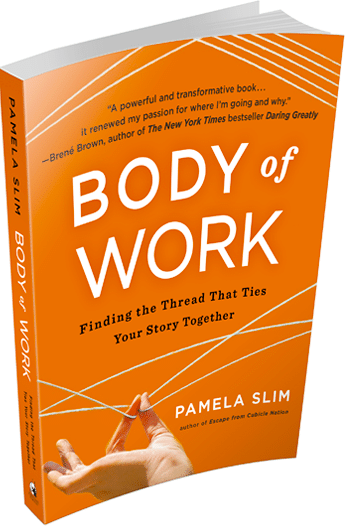 Pam closes: “I got chills as I heard my dad tell his story. I suddenly realized that I had watched him use these skills in his life and career for years, but it wasn’t until I wrote this book that I truly understood the underlying framework, since I was used to looking at his career, volunteer work, and personal life through separate lenses.
Pam closes: “I got chills as I heard my dad tell his story. I suddenly realized that I had watched him use these skills in his life and career for years, but it wasn’t until I wrote this book that I truly understood the underlying framework, since I was used to looking at his career, volunteer work, and personal life through separate lenses.
The one thing I knew all along? That he was a very fulfilled and happy person who navigated a life of challenge and uncertainty with grit and success.”
The moral in Pam’s book for me is to be intentional about the stories we design for ourselves.
If you are looking to create a bigger story in your life, and build an important body of work for yourself and your community, then I encourage you to read Pam’s book. She helps you find the thread that ties your story together.

